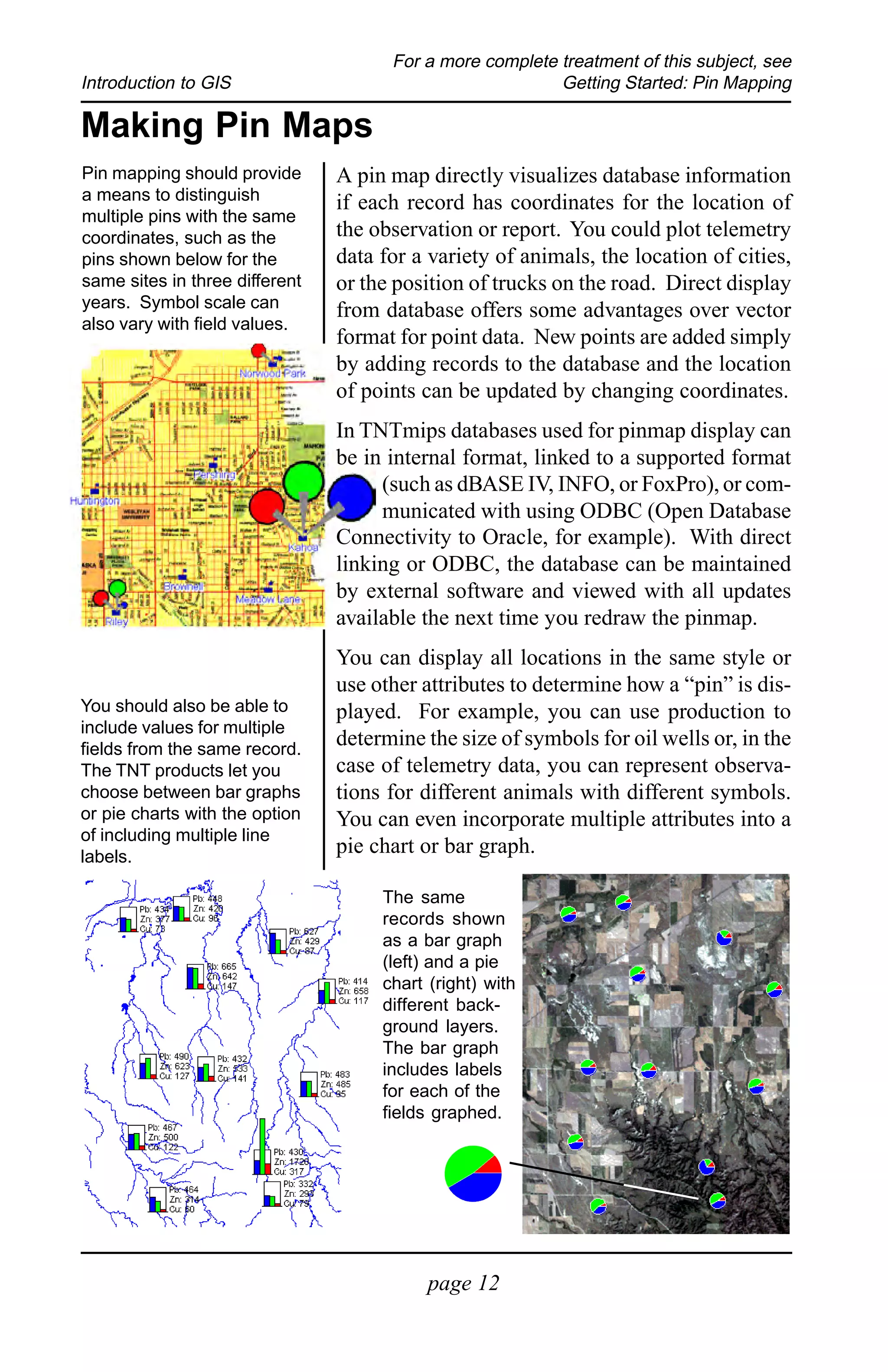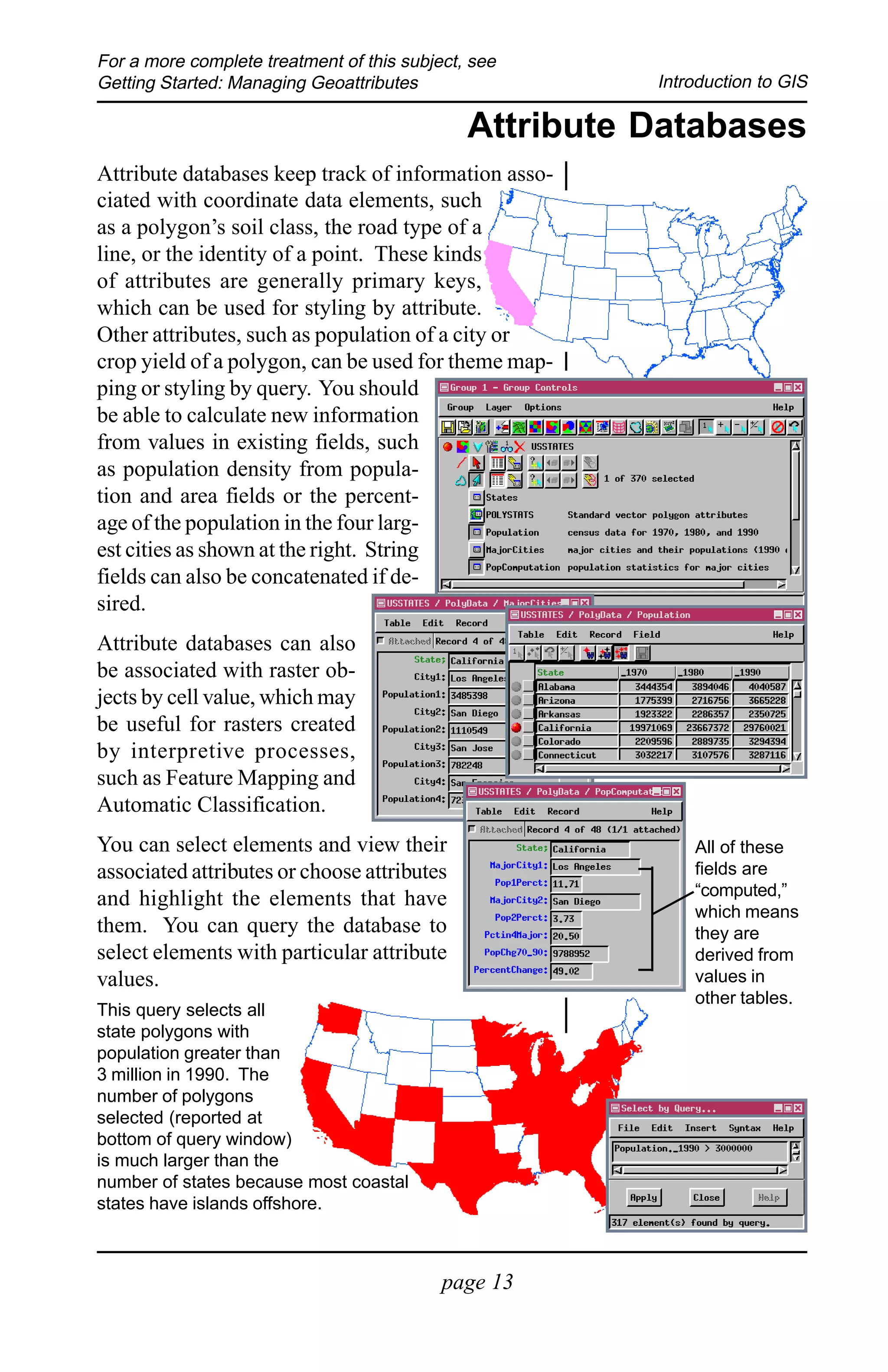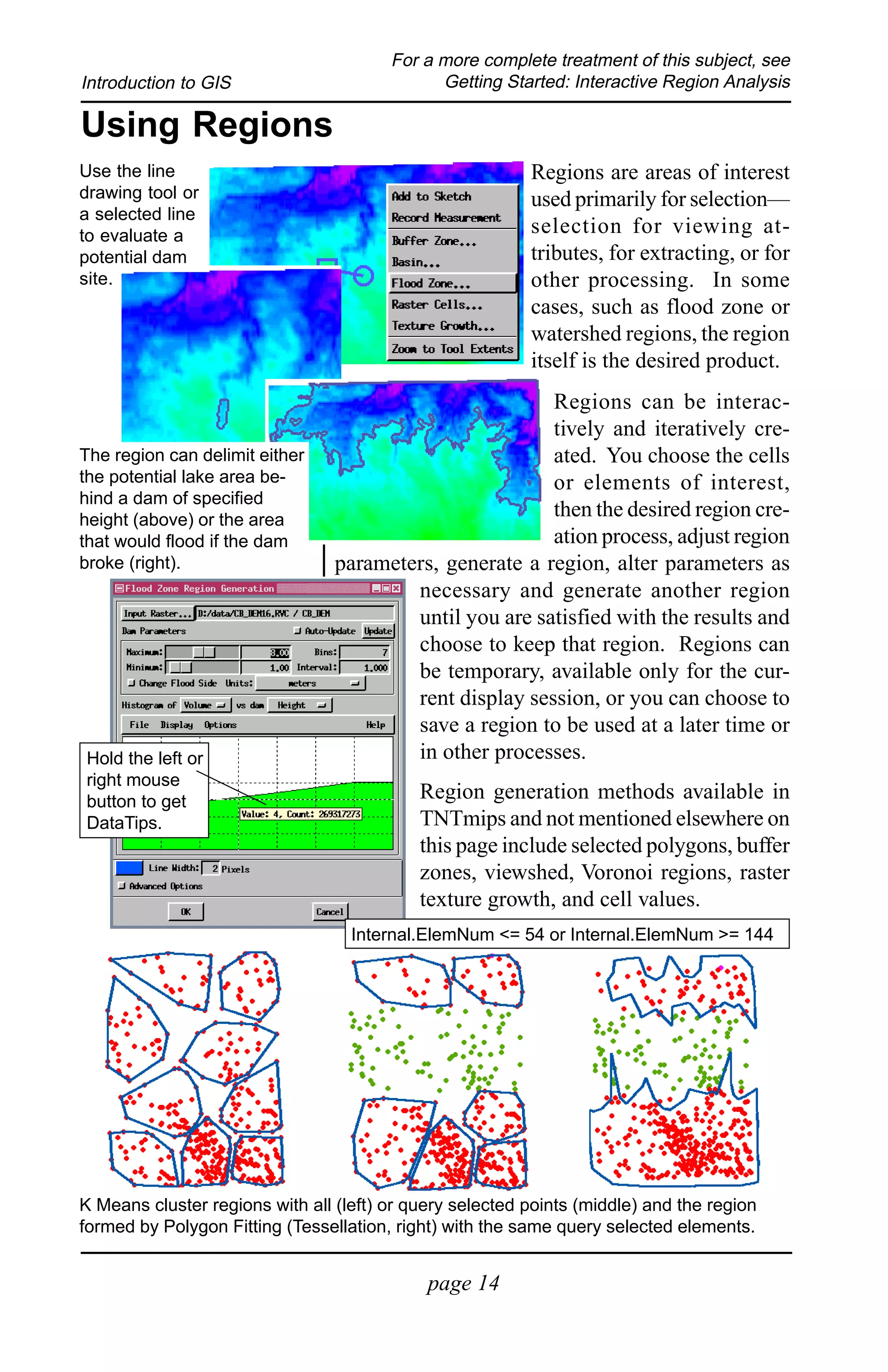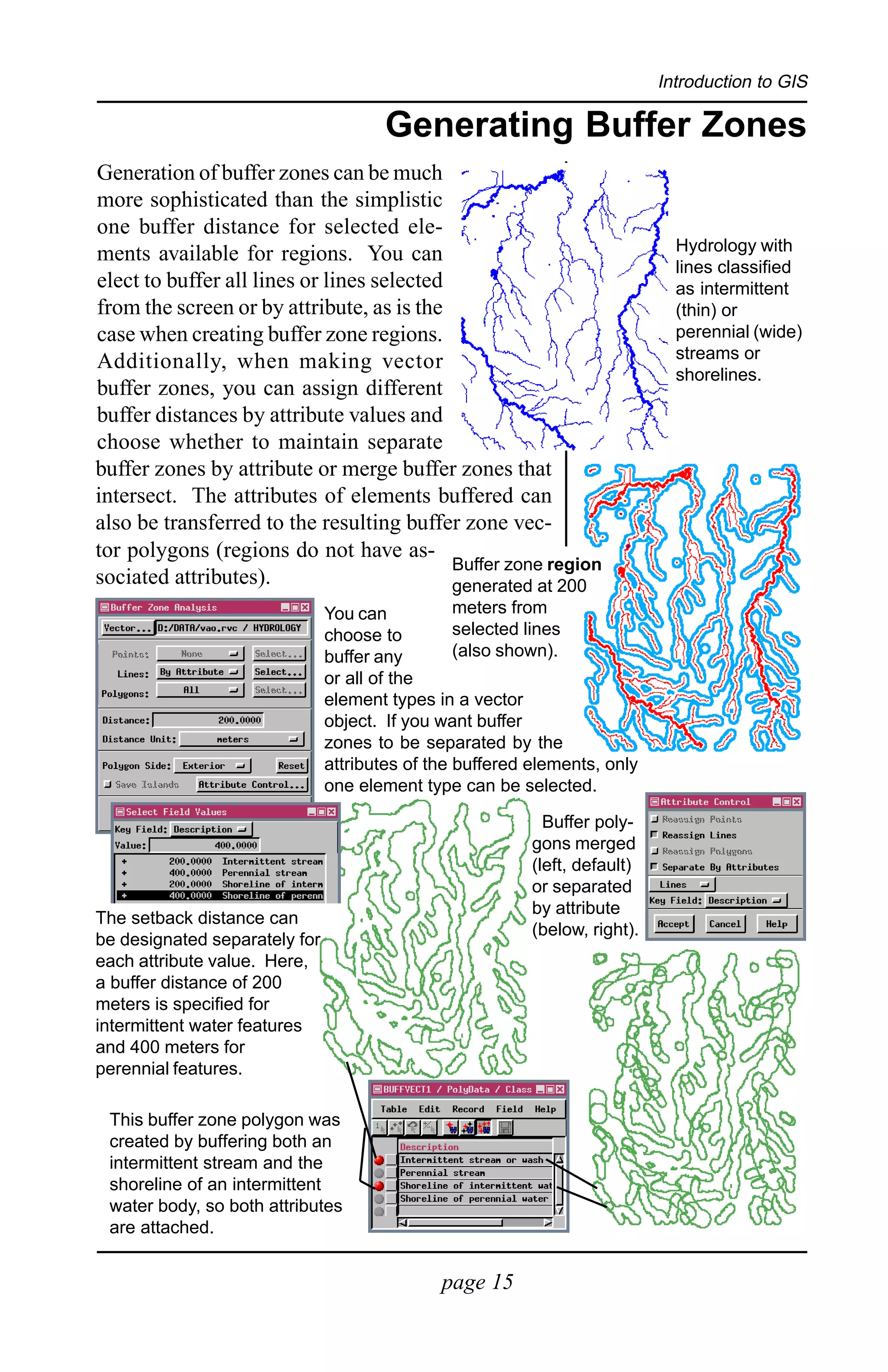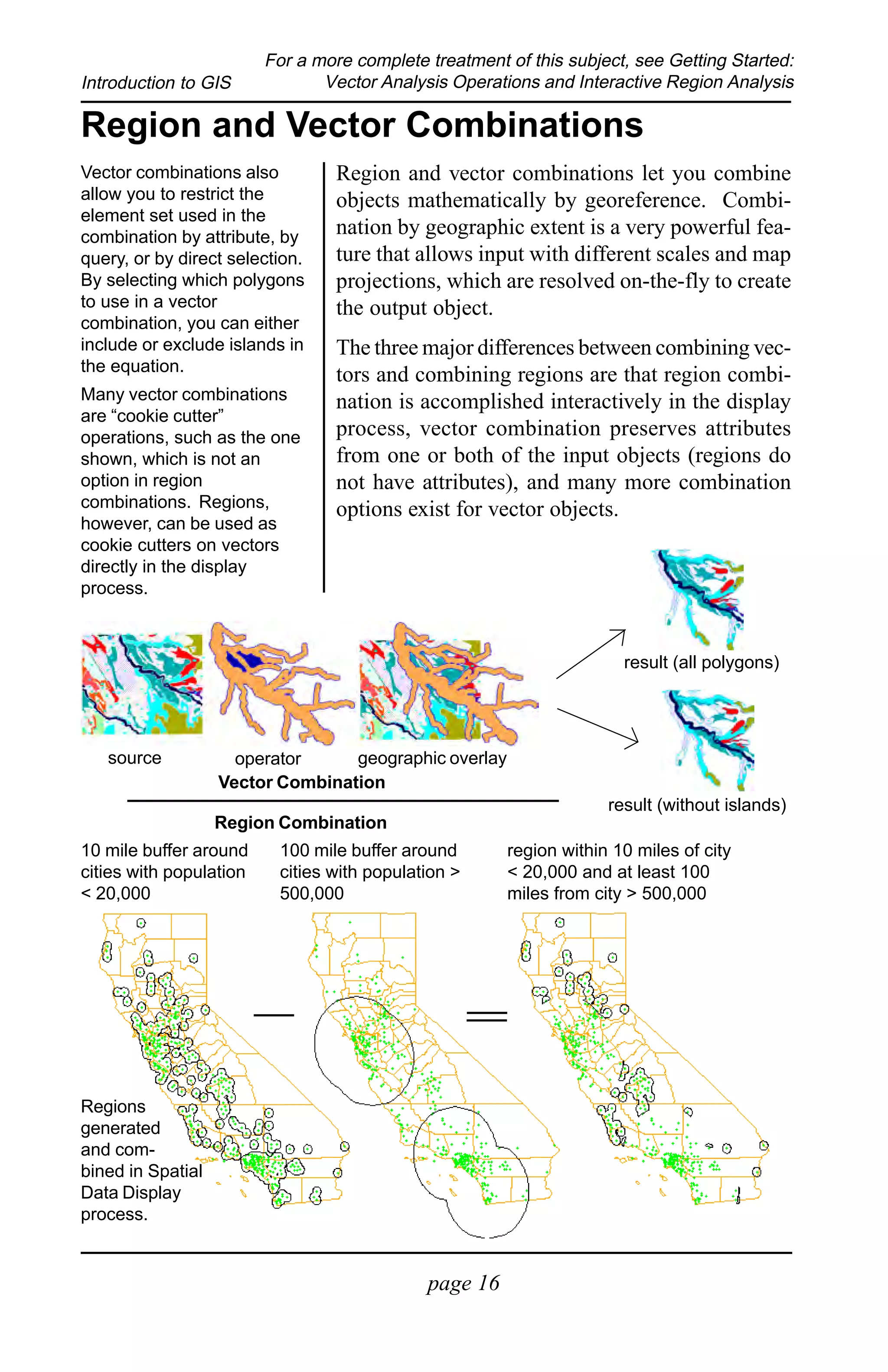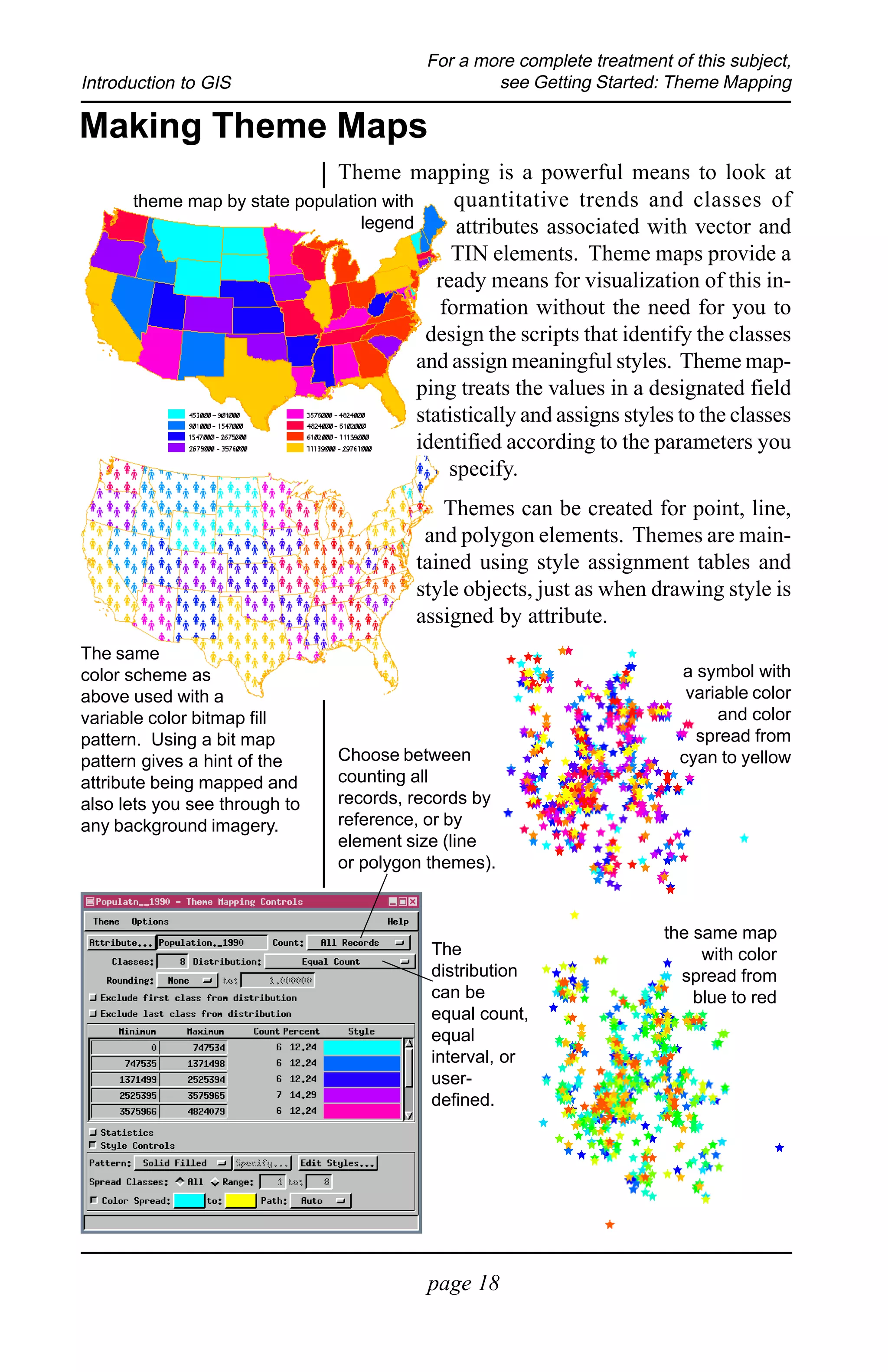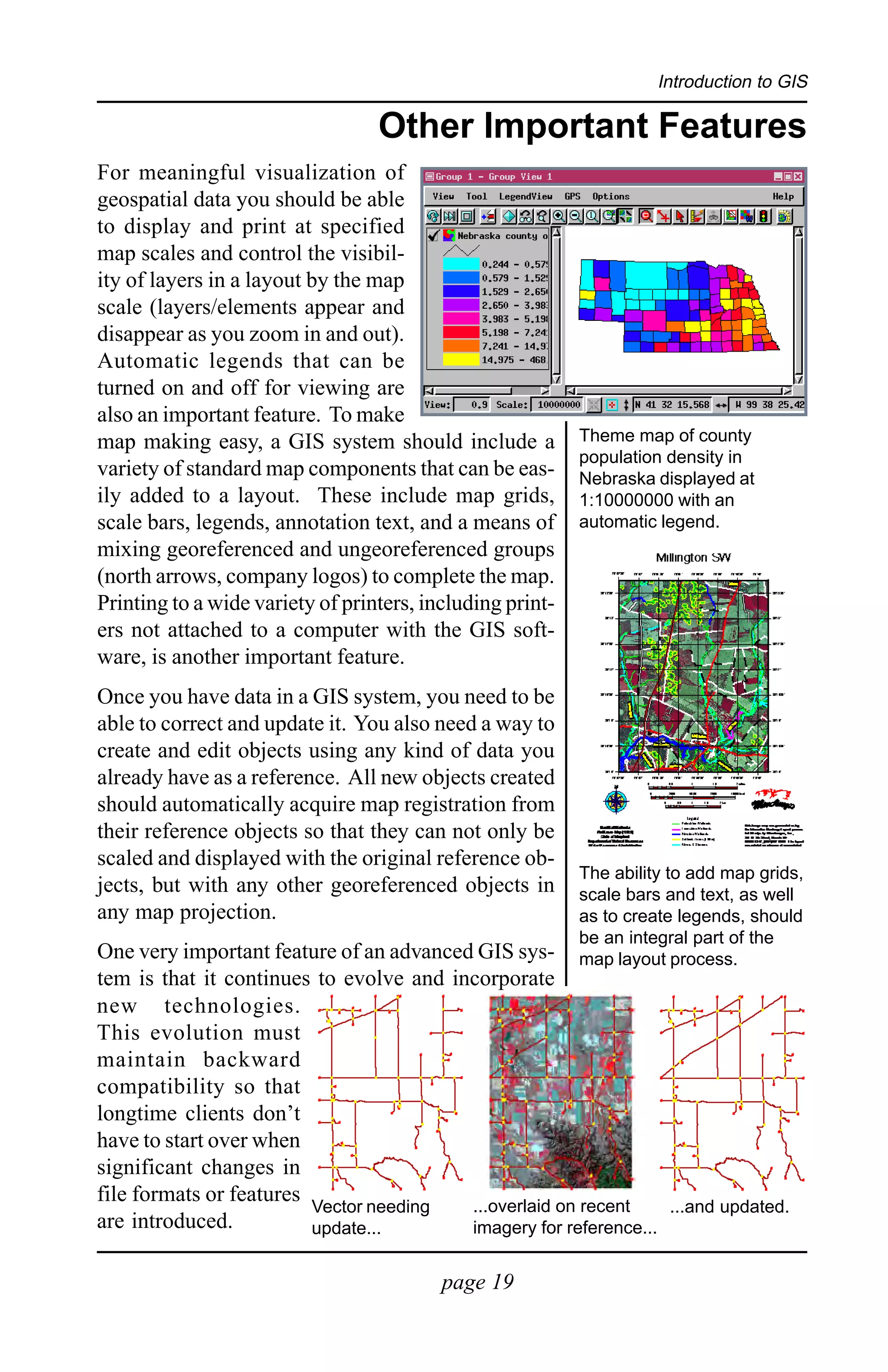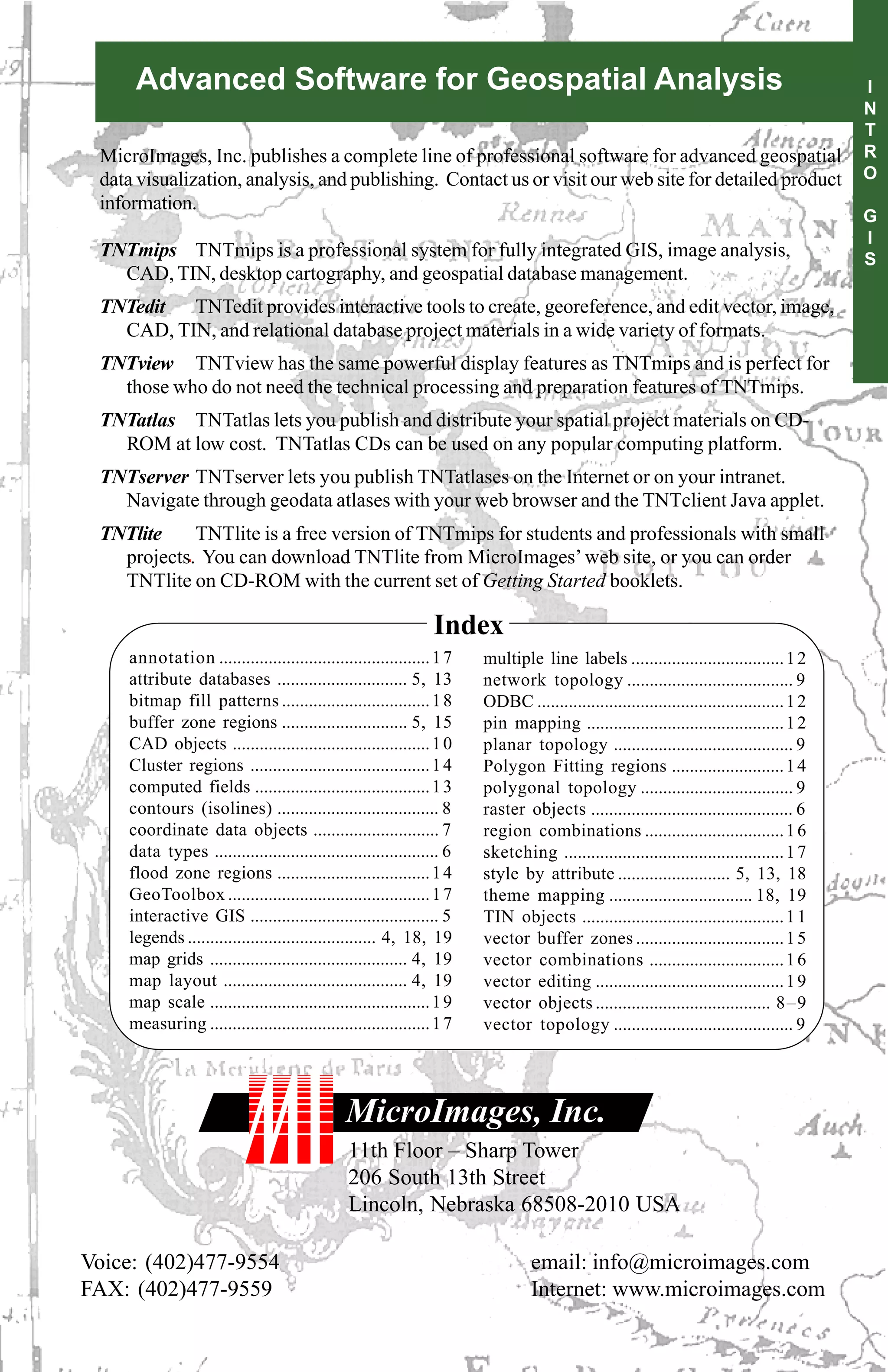This document provides an introduction to Geographic Information Systems (GIS) capabilities. It discusses how GIS has evolved from primarily managing vector data to now integrating imagery and raster data. A full-featured GIS system allows for 3D visualization, overlay of vector data on 3D surfaces, and production of maps incorporating various standard components like grids, scale bars, and legends. Interactive GIS functions allow users to select objects, view their attributes, and use attributes to select or style objects. Raster objects store cell values that represent features and are a fundamental component of modern GIS.
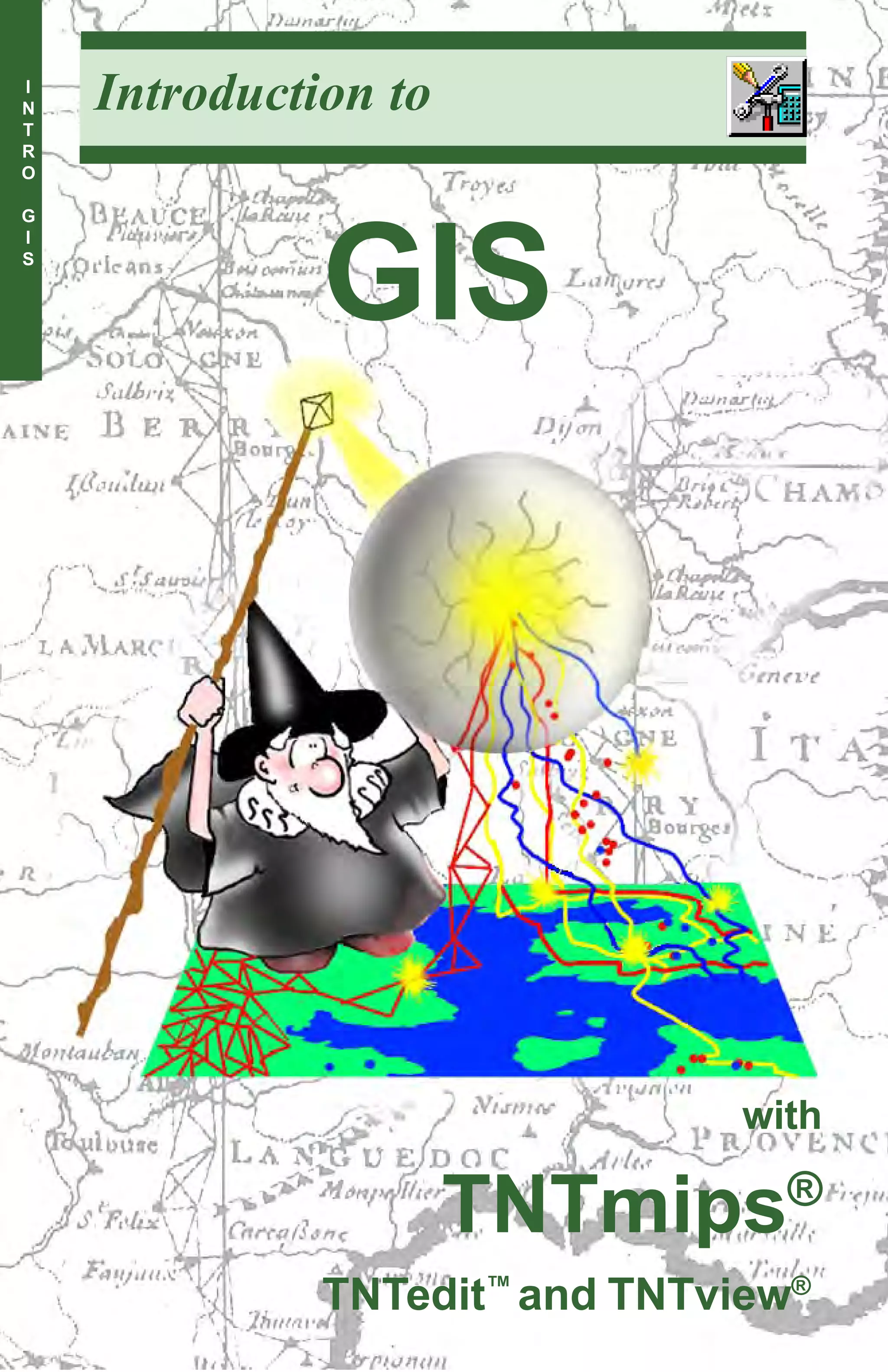
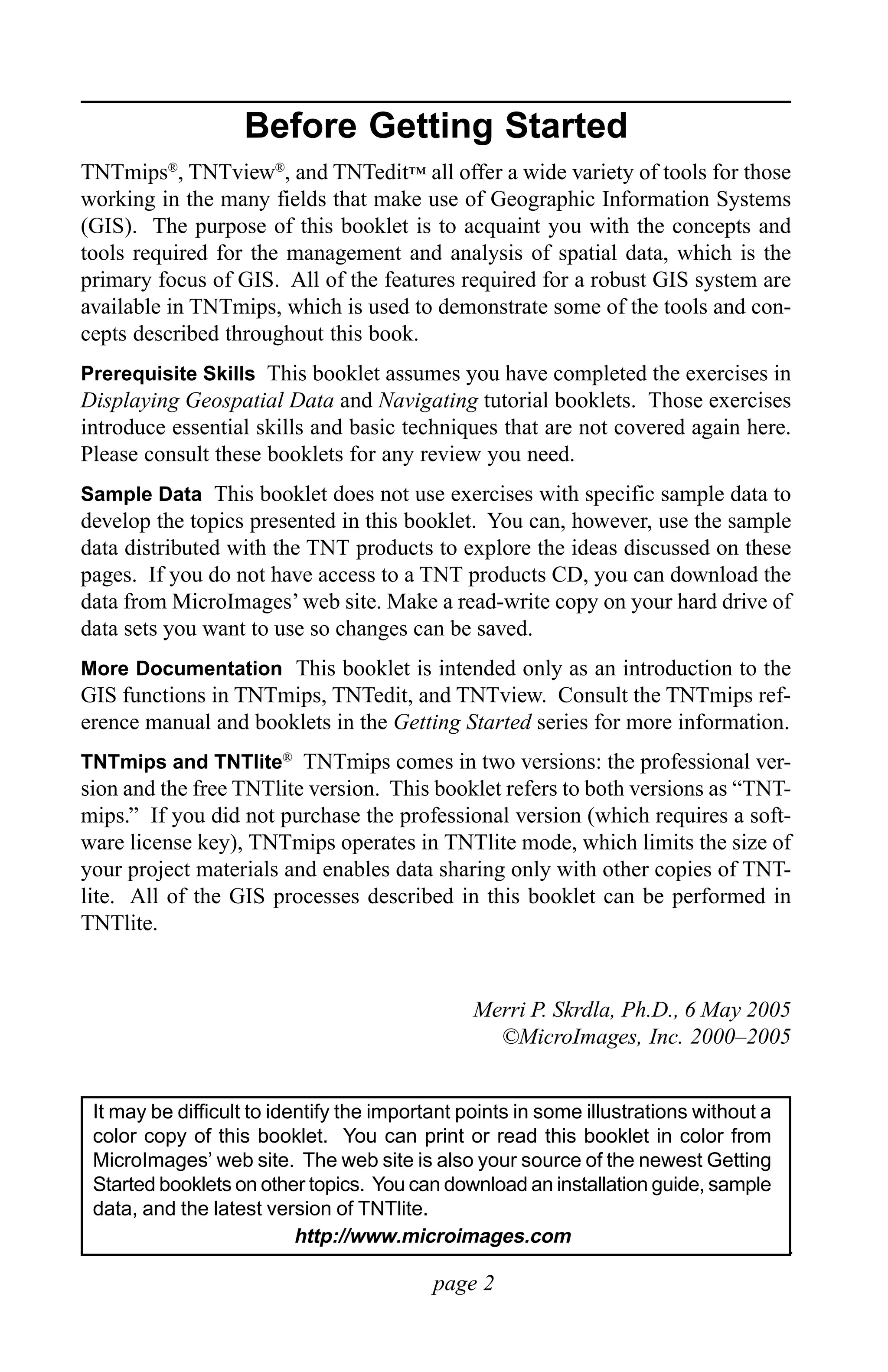
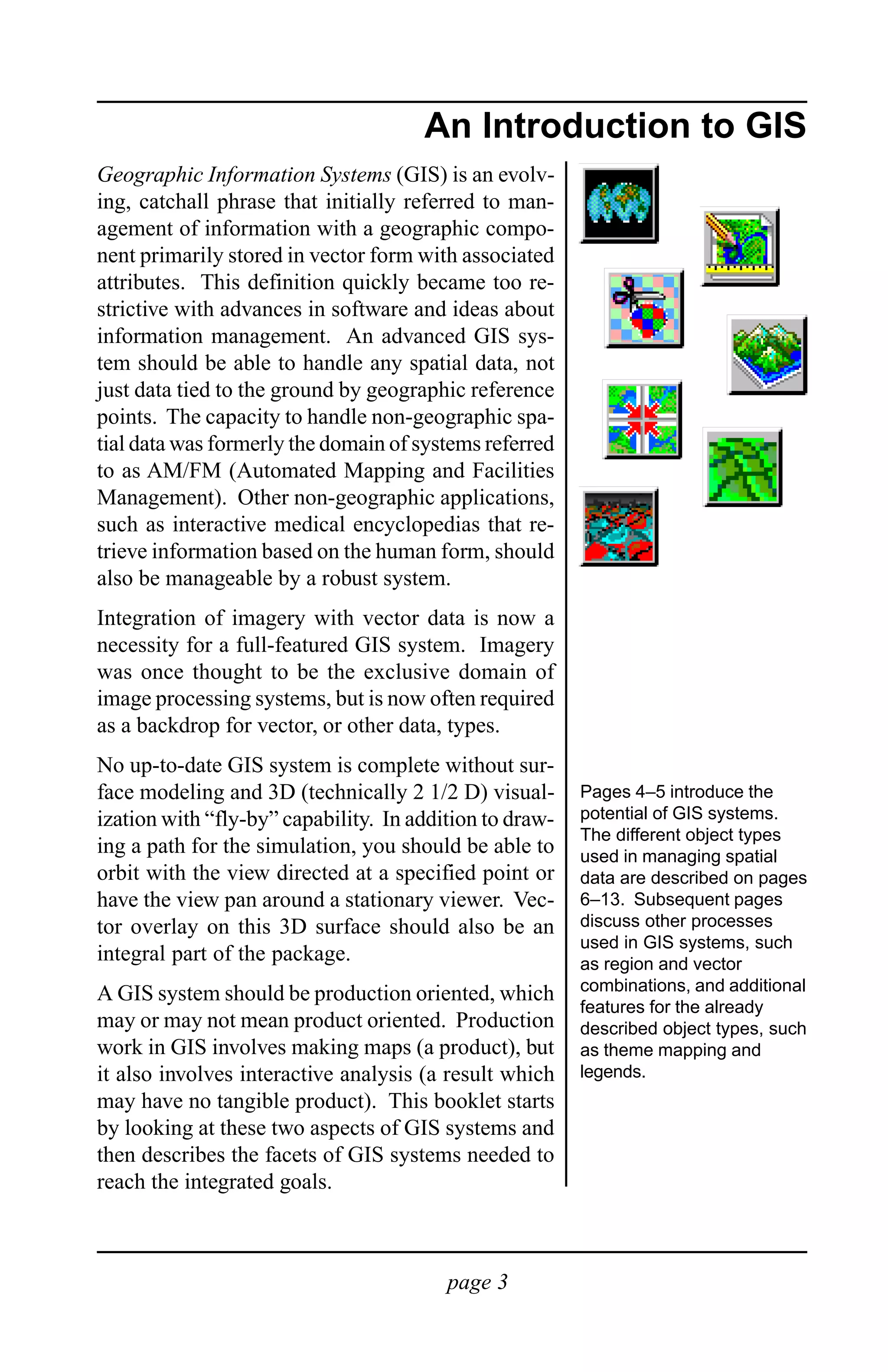

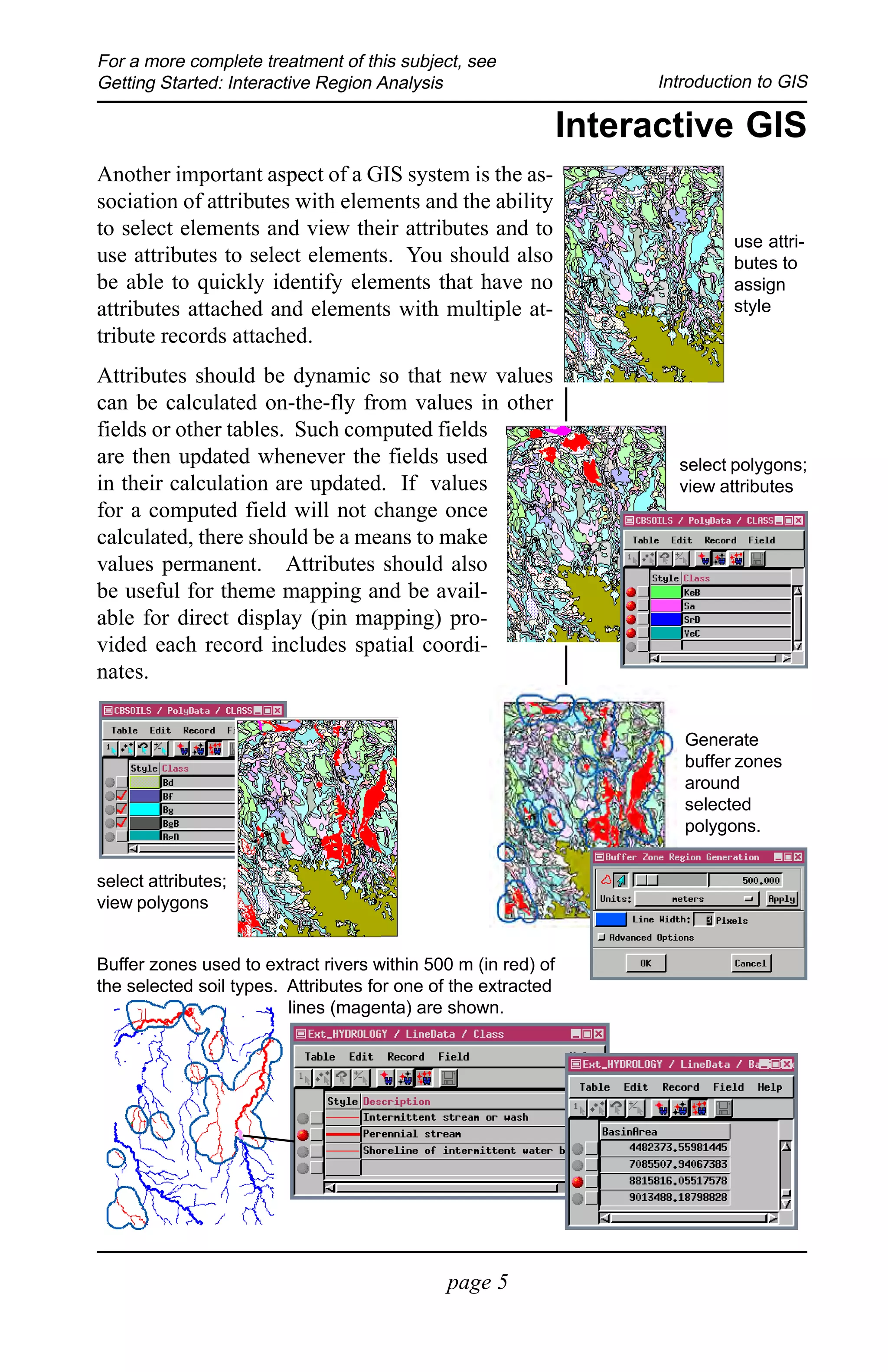
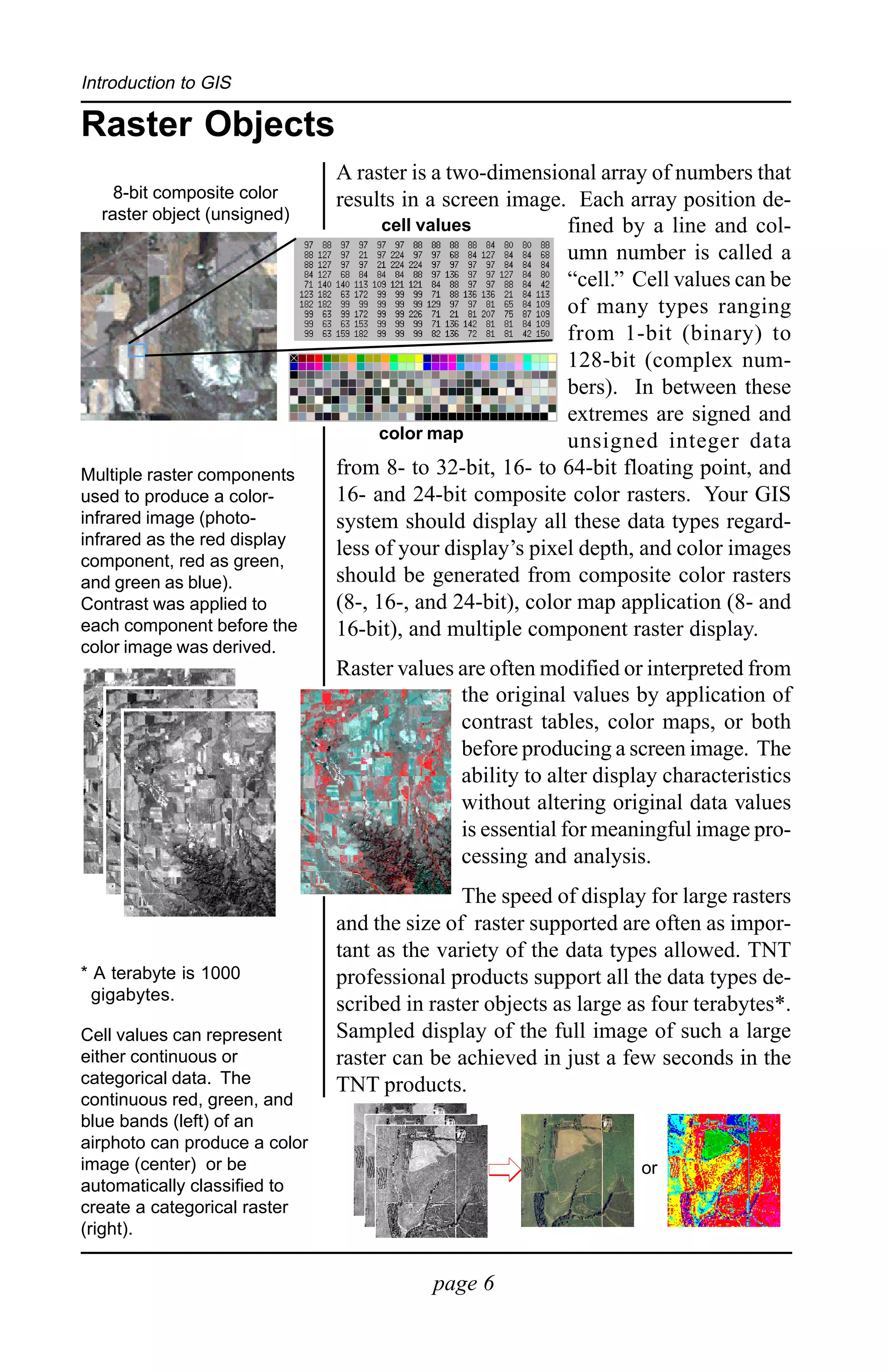
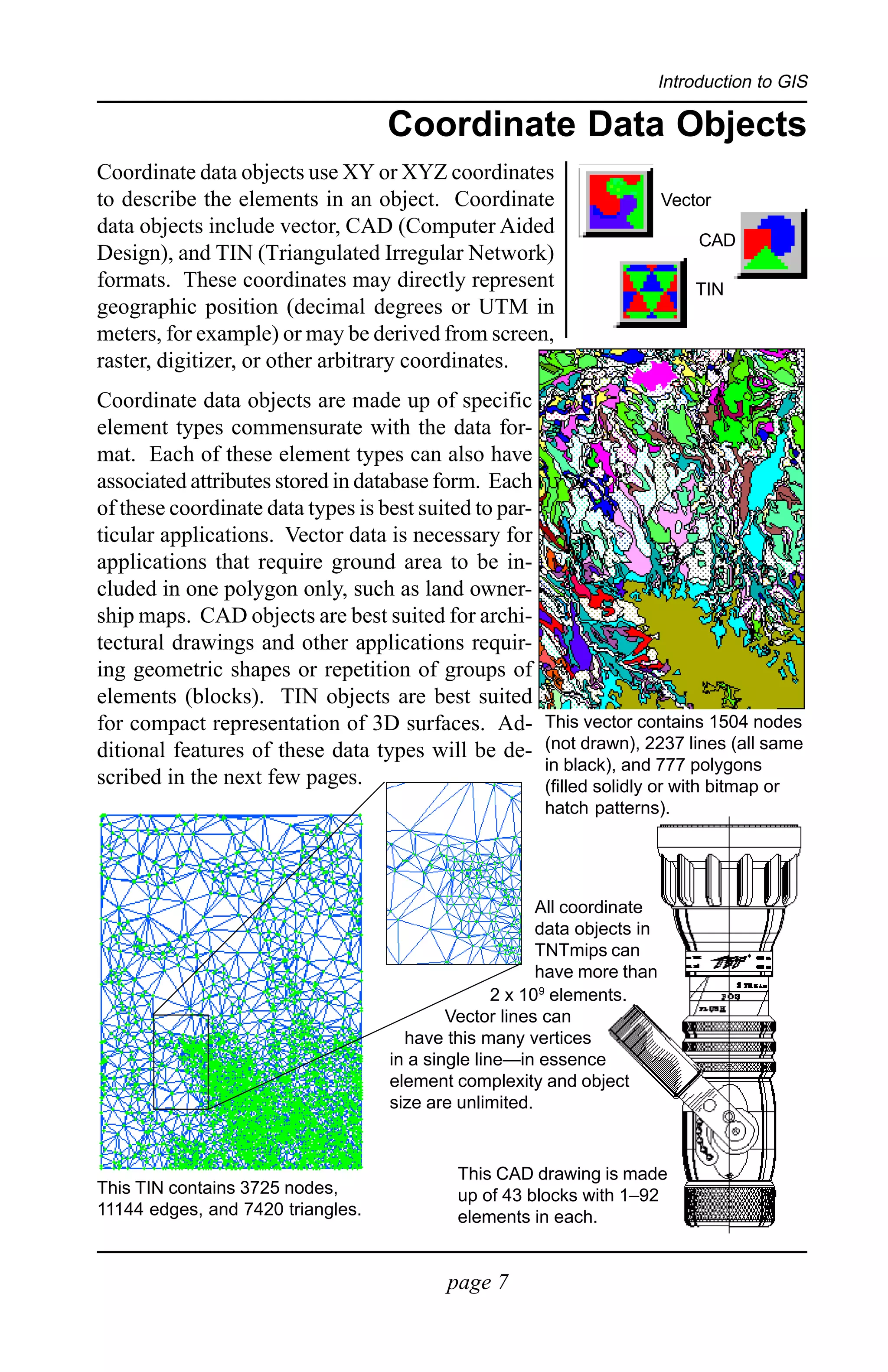
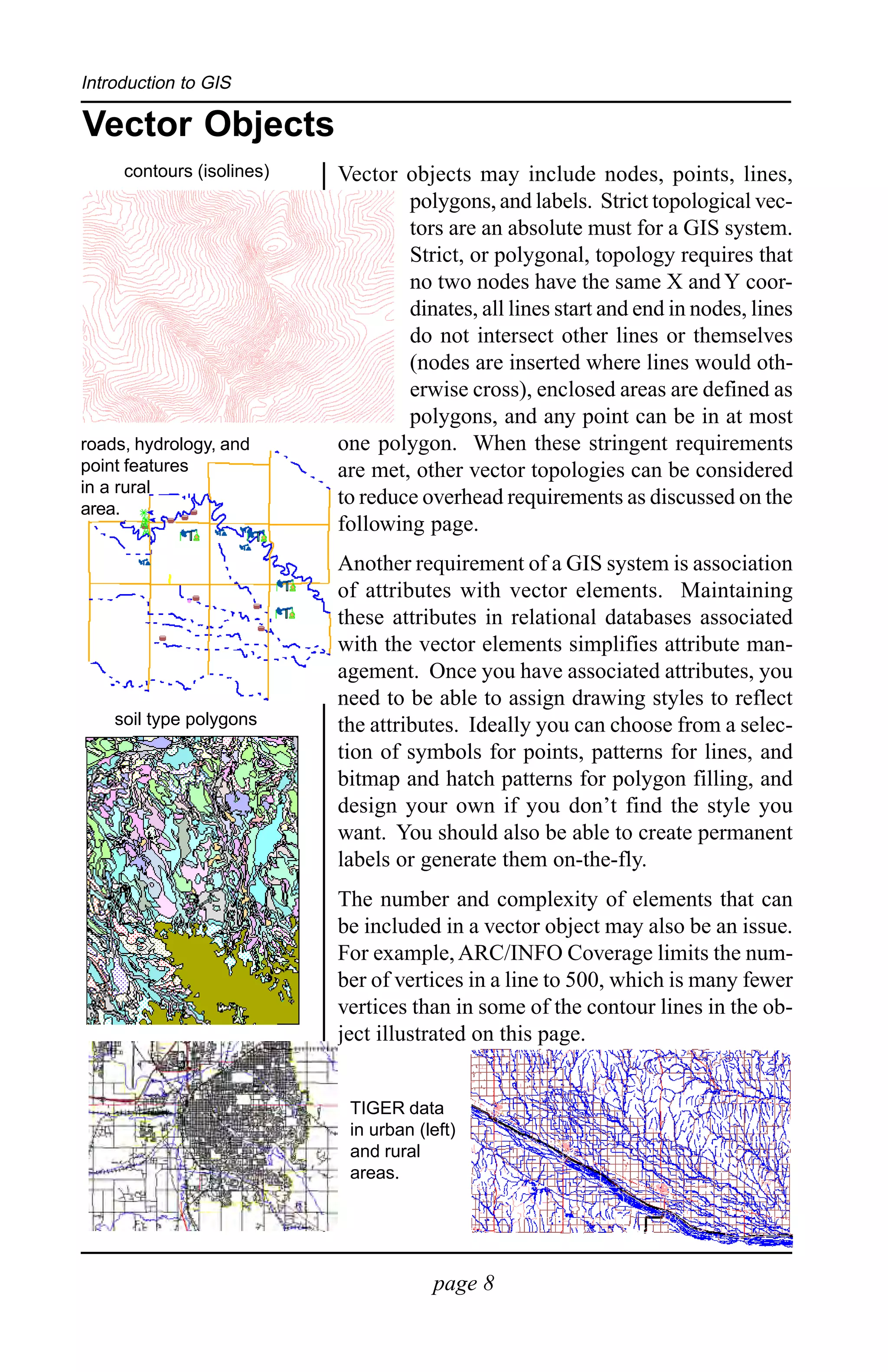
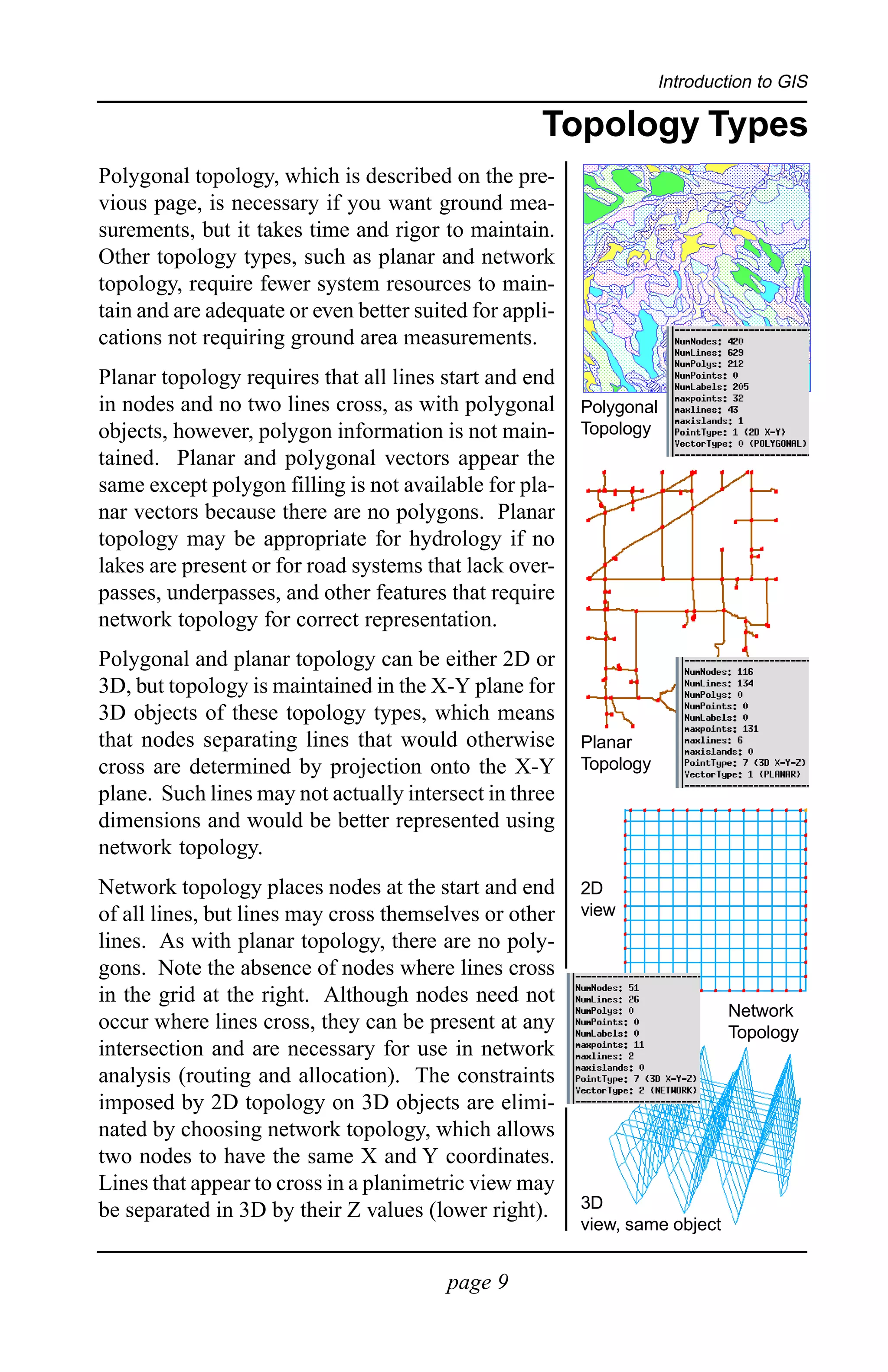
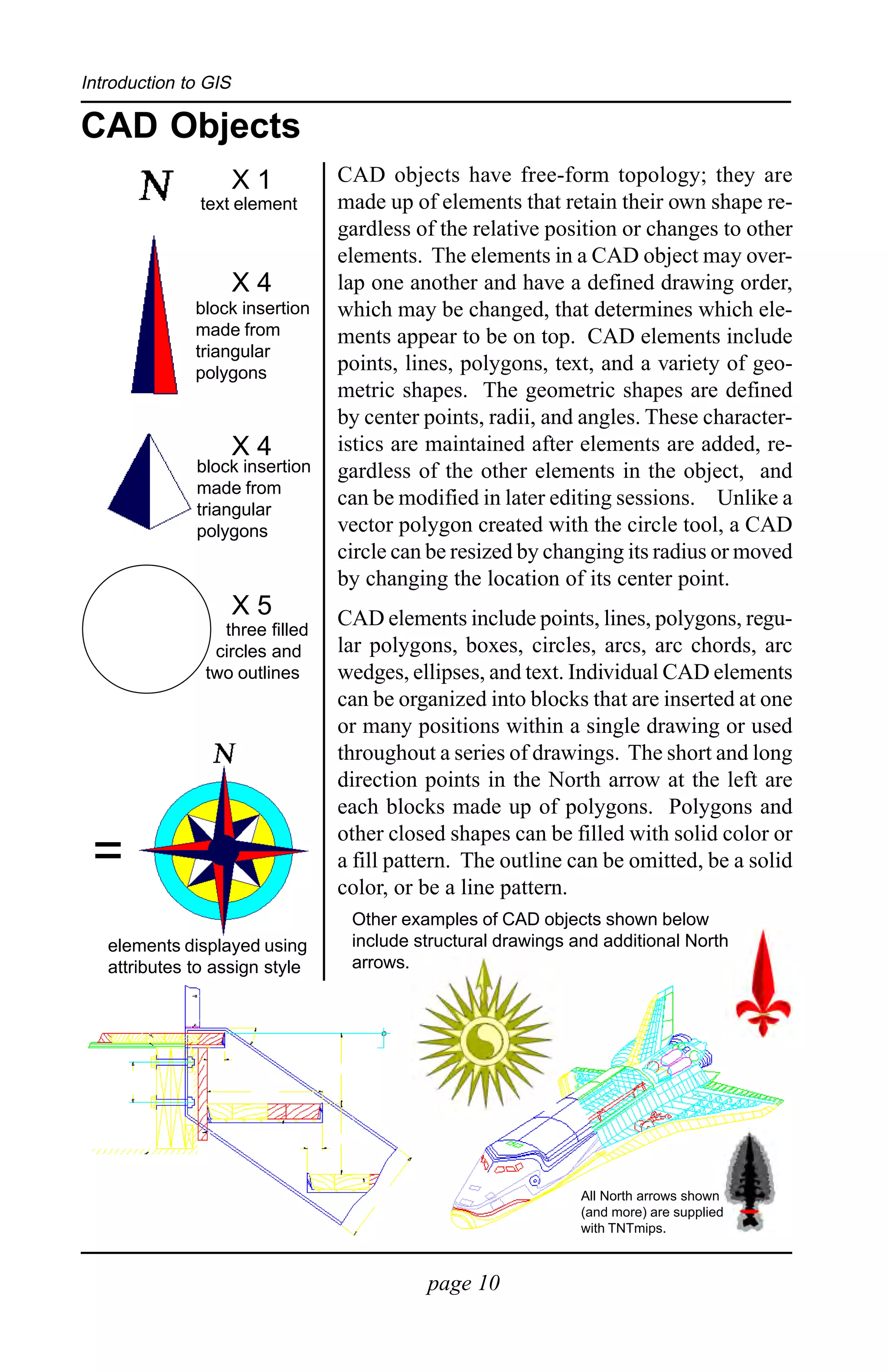
![Introduction to GIS
TIN Objects
TINs (Triangulated Irregular Networks) are com-
posed of nodes, edges, and triangles. The nodes are
irregularly spaced three-dimensional points, con-
nected by edges to represent a surface as a set of
adjacent, conterminous triangles constructed so that
every triangle satisfies the Delaunay criterion.
Delaunay triangulation requires that triangles con-
structed from a randomly dispersed set of points are
as small and equilateral as possible. Choosing points
for a triangle is an arbitrary process; results are
unique; from a set of points there is only one set of
triangles that meet the Delaunay criterion.
When standard attributes
TINs are one of three formats commonly used to are generated for a TIN
represent functional surfaces, such as the Earth’s object, slope and aspect are
calculated for each triangle
surface. [The other two are Digital Elevation Mod- (in addition to area,
els (DEMs) and contour maps.] The TIN data struc- perimeter, and center
ture minimizes the number of points needed to ac- coordinates). These
curately represent surface variations. attributes can be used to
determine fill colors for the
TINs can be represented directly as contours, either triangles that convey a good
deal about the topography
alone or in combination with nodes, edges, and / or
even in a 2D view (below).
triangles. The standard attributes calculated for TIN
objects include slope and aspect, which can be used
to shade the triangles so these attributes are readily
conveyed even in 2D representations.
A TIN object shown in 3D perspective view
with overlaid contours generated on-the-fly
(above) and the contours alone (below). The
2D view of the same TIN (right) shows the
triangles filled with a color assigned by a
script that uses the slope and aspect of the
triangles to determine the color.
page 11](https://image.slidesharecdn.com/introductiontogis-110509085044-phpapp02/75/Introduction-to-gis-11-2048.jpg)
